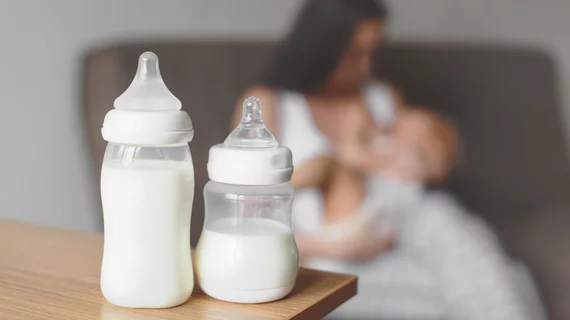How leaders can smooth radiologists’ return from parental leave
Transitioning back from parental leave can be a stressful and uncertain time for radiology residents, but practice leaders can take several steps to ease these struggles, experts wrote Sunday.
Along with the general pressure of medical work, trainees must grapple with a lack of lactation facilities, childcare shortfalls and discrimination. Imaging leaders should anticipate these obstacles, enact policies to counter them and have a plan in place for when rads return, according to a new piece published in Academic Radiology.
“While parental leave is important for all genders, it is particularly important our specialty explores its impact on women as we strive to make radiology a more inclusive specialty and increase the number of women radiologists,” Carolynn DeBenedectis, MD, with the University of Massachusetts Medical School’s Department of Radiology, and six fellow female physicians wrote June 6. “Program directors should play key roles in ensuring the transition from parental leave to work is smooth, successful and less overwhelming for the returning trainee,” they added.
DeBenedectis and colleagues underlined the importance of establishing clear and rational workplace policies to address this issue. This can include written regulations outlining where residents can pump breast milk and when, offering flexible rotations after employees return from leave and addressing the status of call coverage.
“Many residency programs do not have policies addressing call distribution related to parental leave. This lack of transparency may leave trainees returning from parental leave feeling vulnerable,” wrote DeBenedectis, who is the radiology residency program director at UMass.
Putting policies in place is not enough, however, if radiology departments do not endorse, promote and enforce them. The authors urged colleagues to adopt a “zero tolerance” response to those who violate rules around returning from parental leave.
Beyond rule-setting, DeBenedectis et al. offer a step-by-step checklist to guide departmental leaders during this process. For instance, directors can send trainees the lactation policy prior to their return, check in a week after they’re back and set up an in-person meeting at the one-month mark.
“Post-leave meetings between the program director and trainee also ensure the trainee feels supported and assist in identifying and addressing issues early,” the authors advised. “A program director must be prepared, approachable, available and empathetic to trainee concerns.”
You can read more of their advice in the Association of University Radiologists’ official journal here.

